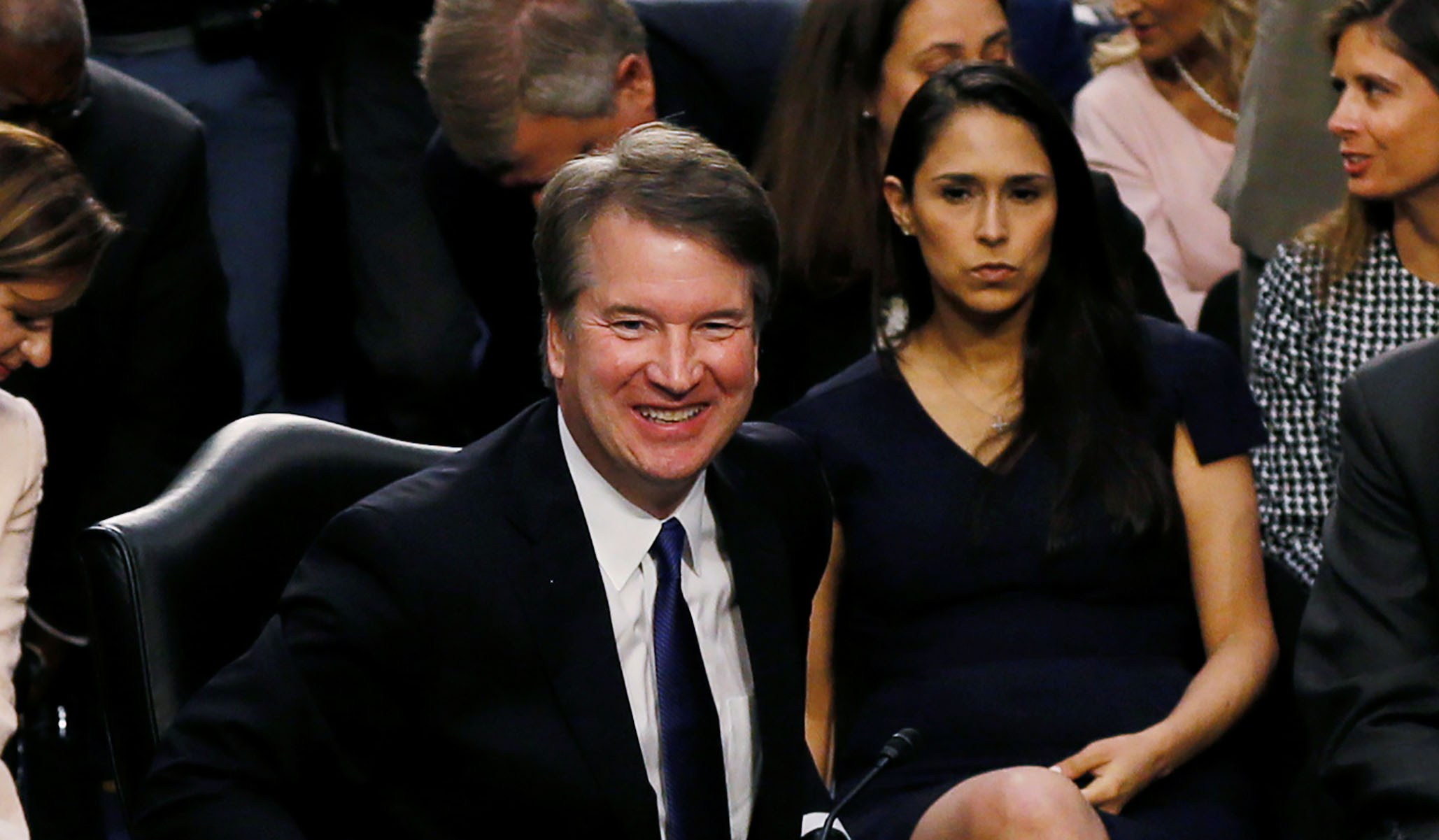By: Katrina Gulliver – nationalreview.com – September 12, 2018
On September 4, attorney Zina Bash, a former clerk for Judge Brett Kavanaugh who was helping steer his nomination to the Supreme Court through the Senate, appeared to make an important gesture at his confirmation hearings. If you followed the resulting hysteria on Twitter, you could be forgiven for thinking she’d stripped off her blouse to reveal a swastika painted on her chest. What she actually did was hold her fingers in something like the reverse of the “OK” sign, with her palm against her arm.
The casual observer would have assumed she was just fidgeting, but not those who know the truth that the OK sign has a dark meaning.
Of course, I jest. In 2017, some members of 4Chan, that virtual frat house of anarchists and trolls, created a hoax: the idea that the OK sign was code for “White Power.” If you look at the shape of the hand, you see, you can supposedly make out the shape of the letters W and P. Thus, a common hand gesture (which means OK in English-speaking countries, and different things elsewhere), was jokingly turned into a racist message. The Anti-Defamation League and countless other mainstream sources explained as much. But the Internet commentariat is not known for its ability to take a joke, and the hoax has been taken as truth by many online, with anxious social-media commenters despairing at having made such a hideous gesture by accident.
Sadly, such conspiracy-minded thinking is ascendant within the online #resistance. Left-wing Twitter sees secret white-supremacist symbols everywhere these days. In May, comedian Dean Obeidallah asked Twitter user Bill Presson “are u wearing a Nazi outfit?” Presson’s profile picture was indeed of a man in uniform — his father, who served in the U.S. Army and was killed in Vietnam. When this was pointed out, Obeidallah was decent enough to apologize. “I had no idea and I sincerely couldn’t tell that was an American uniform nor that the photo was your late father. Your father was a true patriot,” he wrote to Presson. Left unanswered was the question of who, upon seeing a military insignia they don’t recognize, immediately assumes that it’s a Nazi uniform.
In another Twitter outrage earlier this year, New Yorker staffer Talia Lavin resigned after suggesting that a veteran who lost his legs in Afghanistan had a tattoo of the Iron Cross, when in fact his tattoo turned out to be a symbol of his platoon. And then there was Samantha Bee’s gleeful, televised judgment that a young man whose hair was partly shaved for cancer treatment was sporting a “Nazi haircut.”
It is certainly true that throughout history, members of groups that for one reason or another wished to remain incognito have had symbols by which they could recognize one another. In the early days of Christianity, followers apparently would draw the shape of a fish on the ground. If the other person was a Christian too, they would dot the eye. Stories of Freemasonry markers, from the secret handshake to key phrases, abound, some more true than others.
Previously, it was the far right that obsessed over such symbols, looking for Masonic indicators on the dollar bill, for example. The 1990s saw the nadir of this kind of message-seeking, including the publication of William Cooper’s conspiracy-minded cult classic, Behold a Pale Horse, which dispensed such advice as, “Patriots and Tax Protesters: You must never be found at home on any holiday. Your life depends on how well you can obey that rule.” The Gulf War, and then Ruby Ridge and Waco, increased interest in prophecies and millenarian beliefs, as well as anti-government paranoia of the survivalist variety. Shows such as The X-Files, The Lone Gunmen, The Pretender, and Millennium all fed the idea that shadowy forces really run the country, and the observant can spot their signs.
After September 11, old-style conspiracy theories seemed to fall from view. Some of this change was of course generational: Those who remember where they were the day John F. Kennedy was assassinated are fewer than they were 20 years ago, and debates about the Warren Commission and the grassy knoll seem quaintly out of date now. The “9/11 truth” campaigners obviously belonged to the same tradition, but their activities were largely relegated to the fringes of popular discourse.
Now we seem to be seeing a new version of this paranoia on the left. Rather than “love my country, fear my government,” the motto of the conspiracy-minded “resistance” seems to be “hate them both.” It’s hard to imagine even the most committed leftist 20 years ago thinking it likely that a U.S. serviceman was a fan of Hitler, or deciding that a half-Mexican, half-Jewish lawyer was a member of the Klan on the basis of the way she curled her fingers.
Three days after the latter controversy erupted, Zina Bash was shown to flash a more obvious OK sign at Judge Kavanaugh’s confirmation hearings. We can only assume that either A) she has a sense of humor; B) she was responding “OK” to a message sent by someone else in the room; or C) she really is a member of the Aryan Nation and has decided to double down.
I know what I think. I’ll let you guess which interpretation the online #resistance went with.
To see this article, click read more.
 Listen Online
Listen Online Watch Online
Watch Online Find a Station in Your Area
Find a Station in Your Area









 Listen Now
Listen Now Watch Online
Watch Online
